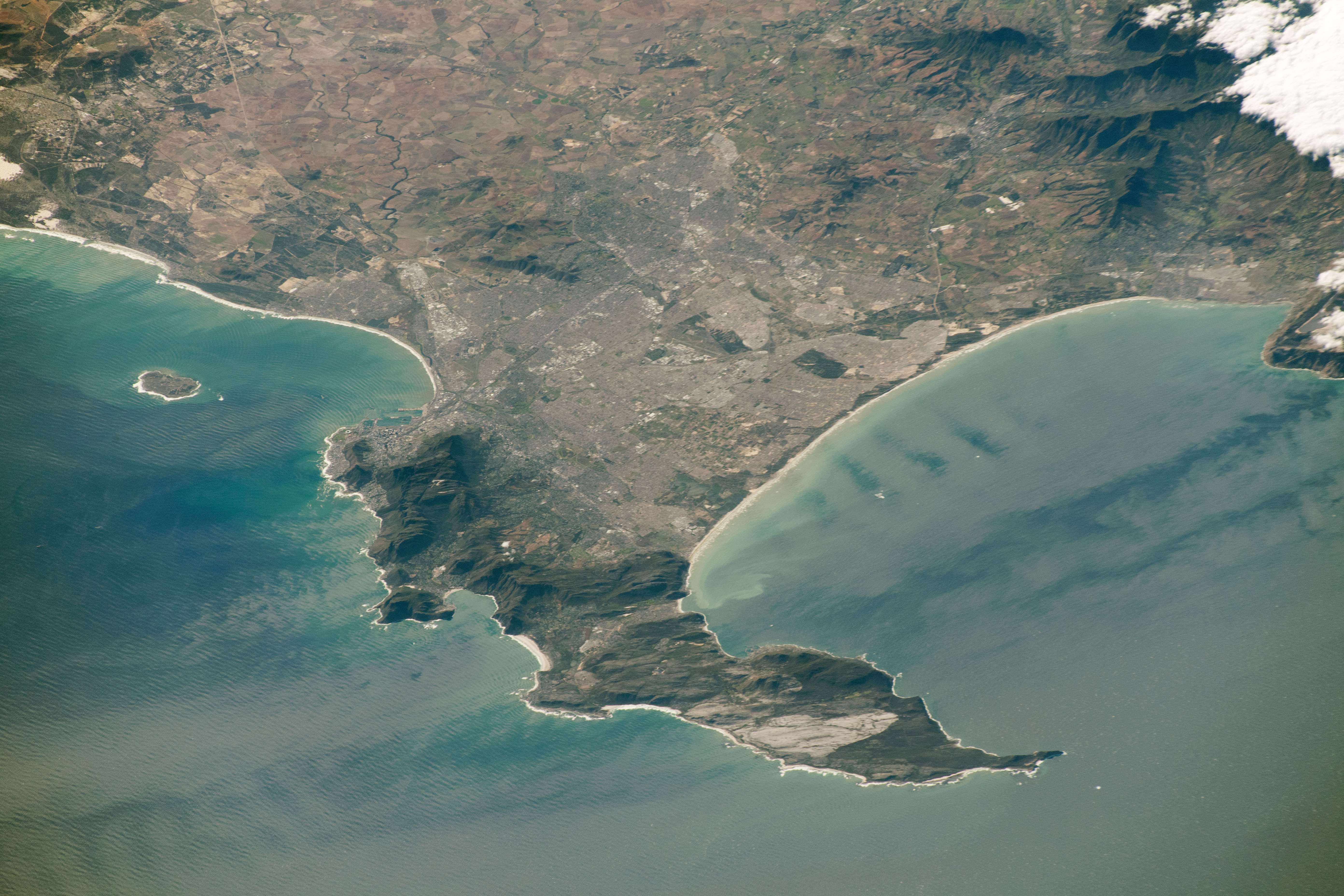|
Table Mountain National Park Marine Protected Area
The Table Mountain National Park Marine Protected Area is an inshore marine protected area around the Cape Peninsula, in the vicinity of Cape Town, South Africa. It was proclaimed in Government Gazette No. 26431 of 4 June 2004 in terms of the Marine Living Resources Act, 18 of 1998. The MPA is of value for conservation of a wide range of endemic species, and has considerable economic value as a tourist destination. It encloses a large number of recreational dive sites visited by local residents and tourists from further afield. The shark and whale watching tourist industries are also represented, and there are several popular surf breaks. The MPA is mainly a controlled zone where extractive activities are allowed under permit, with six small no-take zones. The MPA is administrated by the Table Mountain National Park, a branch of SANParks. The marine ecology is unusually varied for an area of this size, as a result of the meeting of two major oceanic water masses near Cape P ... [...More Info...] [...Related Items...] OR: [Wikipedia] [Google] [Baidu] [Amazon] |
Western Cape
The Western Cape ( ; , ) is a provinces of South Africa, province of South Africa, situated on the south-western coast of the country. It is the List of South African provinces by area, fourth largest of the nine provinces with an area of , and List of South African provinces by population, the third most populous, with an estimated 7 million inhabitants in 2020. About two-thirds of these inhabitants live in the metropolitan area of Cape Town, which is also the provincial capital. The Western Cape was created in 1994 from part of the former Cape Province. The two largest cities are Cape Town and George, Western Cape, George. Geography The Western Cape is roughly L-shaped, extending north and east from the Cape of Good Hope, in the southwestern corner of South Africa. It stretches about northwards along the Atlantic coast and about eastwards along the South African south coast (Southern Indian Ocean). It is bordered on the north by the Northern Cape and on the east by ... [...More Info...] [...Related Items...] OR: [Wikipedia] [Google] [Baidu] [Amazon] |
False Bay
False Bay (Afrikaans: ''Valsbaai'') is a body of water in the Atlantic Ocean between the mountainous Cape Peninsula and the Hottentots Holland Mountains in the extreme south-west of South Africa. The mouth of the bay faces south and is demarcated by Cape Point to the west and Cape Hangklip to the east. The north side of the bay is the low-lying Cape Flats, and the east side is the foot of the Hottentots Holland Mountains to Cape Hangklip which is at nearly the same latitude as Cape Point. In plan the bay is approximately square, being roughly the same extent from north to south as east to west, with the southern side open to the ocean. The seabed generally slopes gradually down from north to south, and is mostly fairly flat unconsolidated sediments. Much of the bay is off the coast of the City of Cape Town, and it includes part of the Table Mountain National Park Marine Protected Area and the whole of the Helderberg Marine Protected Area. The name "False Bay" was applied a ... [...More Info...] [...Related Items...] OR: [Wikipedia] [Google] [Baidu] [Amazon] |
Convention On Biological Diversity
The Convention on Biological Diversity (CBD), known informally as the Biodiversity Convention, is a multilateral treaty. The Convention has three main goals: the conservation of biological diversity (or biodiversity); the sustainable use of its components; and the fair and equitable sharing of benefits arising from genetic resources. Its objective is to develop national strategies for the conservation and sustainable use of biological diversity, and it is often seen as the key document regarding sustainable development. The Convention was opened for signature at the Earth Summit in Rio de Janeiro on 5 June 1992 and entered into force on 29 December 1993. The United States is the only UN member state which has not ratified the Convention. It has two supplementary agreements, the Cartagena Protocol and Nagoya Protocol. Cartagena Protocol on Biosafety, The Cartagena Protocol on Biosafety to the Convention on Biological Diversity is an international treaty governing the movements of ... [...More Info...] [...Related Items...] OR: [Wikipedia] [Google] [Baidu] [Amazon] |
Wreck And Salvage Act 94 Of 1996
Wreck or The Wreck may refer to: Common uses * Wreck, a collision of an automobile, aircraft or other vehicle * Shipwreck, the remains of a ship after a crisis at sea Places * The Wreck (surf spot), a surf spot at Byron Bay, New South Wales, Australia Arts, entertainment, and media Films * ''The Wreck'' (1913 film), an Australian film * ''The Wreck'' (1927 film), an American film Music * The Wrecks, an American alternative rock band * Wreck (band), an American indie rock band * ''Wreck'' (album), a 2012 album by Unsane * "Wreck", a song by Gentle Giant from their album ''Acquiring the Taste'' Other uses in arts, entertainment, and media * ''Wrecks'', one-man play by Neil LaBute *''The Wreck'', story by Guy de Maupassant * ''Wreck'' (TV series), British comedy horror television series * ''The Wreck'' (video game), a 2023 adventure game Other uses * Wreck, a ceremony of initiation into the 40 et 8 club See also * Emergency wreck buoy, a navigation mark warning of a new wre ... [...More Info...] [...Related Items...] OR: [Wikipedia] [Google] [Baidu] [Amazon] |
World Heritage Convention Act, No
The world is the totality of entities, the whole of reality, or everything that exists. The nature of the world has been conceptualized differently in different fields. Some conceptions see the world as unique, while others talk of a "plurality of worlds". Some treat the world as one simple object, while others analyze the world as a complex made up of parts. In scientific cosmology, the world or universe is commonly defined as "the totality of all space and time; all that is, has been, and will be". Theories of modality talk of possible worlds as complete and consistent ways how things could have been. Phenomenology, starting from the horizon of co-given objects present in the periphery of every experience, defines the world as the biggest horizon, or the "horizon of all horizons". In philosophy of mind, the world is contrasted with the mind as that which is represented by the mind. Theology conceptualizes the world in relation to God, for example, as God's creation, ... [...More Info...] [...Related Items...] OR: [Wikipedia] [Google] [Baidu] [Amazon] |



